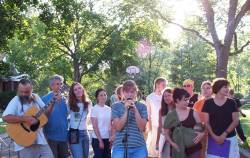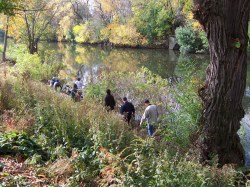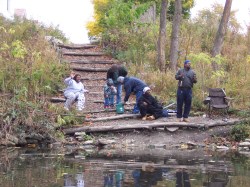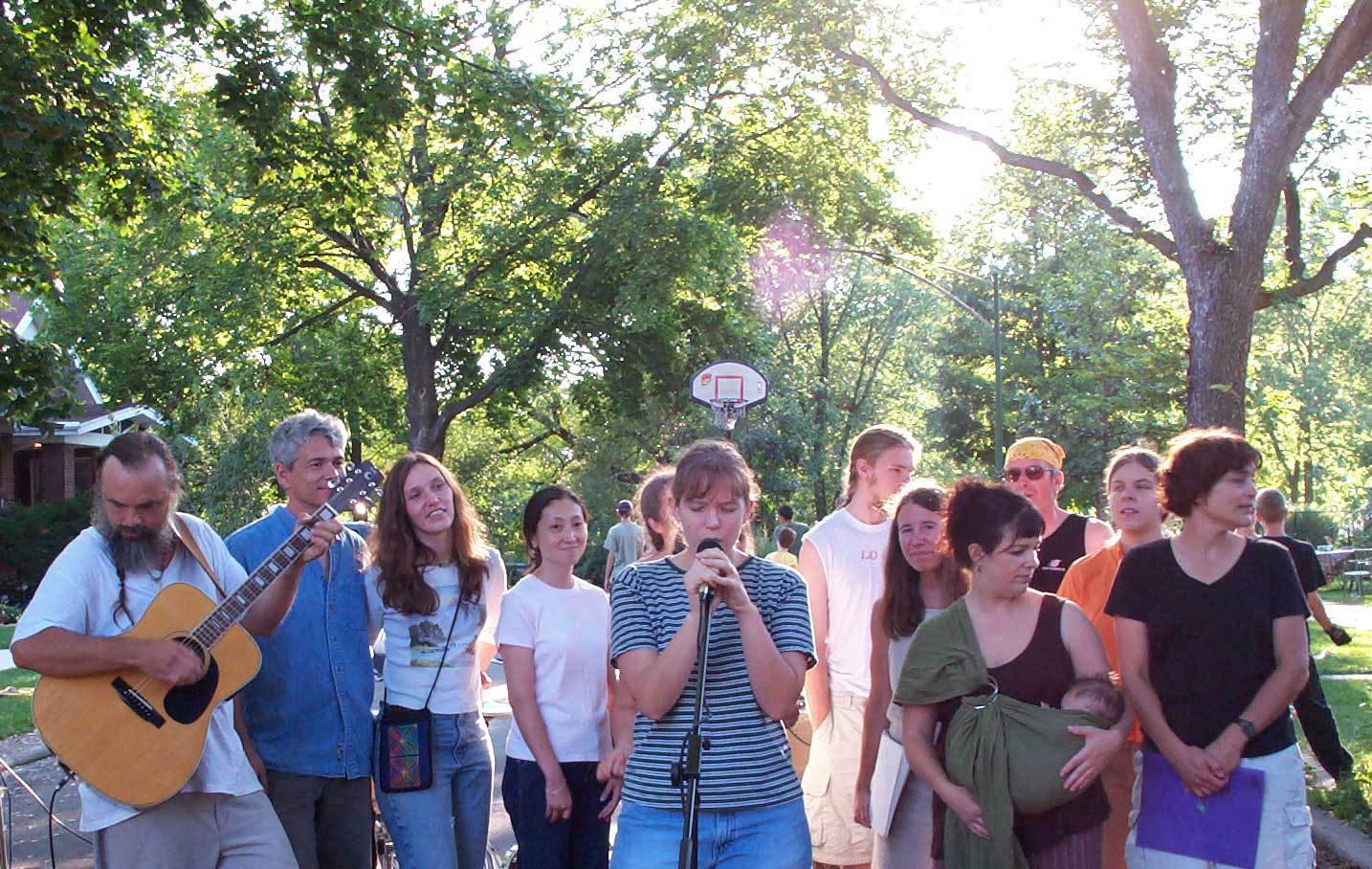
The Bullfrogs.
On the equinox, March 20, a mostly forgotten sliver of a city neighborhood, where Goldeneyes and Coots fly low and fast along the river, the stalks of last season’s brush still steeped in snow, hummed with the celebration of the season’s unfolding.
They gathered along the water’s banks, cutting back old growth, repairing paths and railings fashioned from tree branches. And when the day’s labor was done, the local chorus, calling themselves the Bullfrogs, sang songs bidding farewell to winter with a rousing cheer to spring.
This is life among the Riverbank Neighbors, ages 0 to 90, so named because of their close proximity to the once-shunned North Branch of the Chicago River and the life they’ve built around it. In one breath, they are both a throwback and the future, recalling a time when community thrived, often centered around the local landscape. Their recapture of life writ small and meaningful makes the art of porch sitting seem regal, a wooden step, a throne.
After his mother slipped down the muddy bank during a walk in 1994, Pete Leki took to clearing the thicket of weeds and gnarly trees hiding the ribbon of water long shunned because of its stink and ugliness. It was as if a curtain lifted — Well what have we here! — and for the first time, this mix of working class and upwardly mobile neighbors saw light bounce off the river.
Leki, an elementary school science teacher whose house is a mere stone’s throw from the river, built steps from discarded concrete and flagstone, fashioning railings from old tree branches. He posted bills about brush clearing around the neighborhood. A few turned into many. Together they shored up the bank, terracing the new soil to prevent erosion. Naming themselves Riverbank Neighbors, they began celebrating a day’s work with potlucks along the bank. Afterward, the Bullfrogs would sing a cappella — a bit of The Talking Heads or Sly and the Family Stone.

Old brush was replaced with native plants and trees: hazelnut and American plum, blue fruited dogwood, button bush. Rows of gooseberry bushes now yield fruit for pies and jams. Beavers have returned to the water, along with turtles and fish. Fox and Black-crowned Night Herons, Red-breasted Grosbeaks, and Great Horned Owls. Each house, it seems, has a canoe or kayak.
Alan Ehrenhalt, author of The Lost City, a study on the decline of communities in the U.S., says Riverbank Neighbors reflects a shift. Nature — parks and forests, farms and gardens — historically have been at the core of community. Today’s environmental concerns, such as climate change and mass extinction, increase the desire for people to live in more tightly knit communities. The swelling use of social media, he adds, is actually drawing people closer to where they want to meet in person.
In Chicago, the Riverbank Neighbors have set up a system of borrow and barter as a means to stay out of the big box stores. And they’ve created a fun, illustrated guide to keep them off the marketer’s map, titled How to Disappear.
Fridays mark the Walk Around, when many Riverbank Neighbors open their homes at the dinner hour and are visited by other neighbors who make their way from house to house, eating a bit of the meal, often grown in their own gardens, at every stop. There’s a requirement, however, that before moving on to the next home, guests and hosts must throw on some music and dance. Leki says the most recent tunes included some hip-hop, a Cajun waltz, and bits of classic rock.

On the first weekend day following an equinox, neighbors will gather and form a circle either outside or in someone’s house, and a member from each family tells what has transpired in their lives over the closing season — deaths, joy, achievements, birth. They will also go over their precise river management goals for the seasons ahead, detailing work to be done throughout the year.
At Waters Elementary School, where Leki teaches, the river’s history is taught in second and sixth grades and it includes study along its banks. Recently, the students met cellist Yo-Yo Ma, as part of the Chicago Symphony Orchestra’s Rivers Festival, in which they celebrate great musical works centered around rivers. The kids sang a song they wrote about the river:
Long time ago, I think,
Indian kids could swim and drink
Now when kids come down to play,
A sign there says to stay away …
Rivers, the CSO stresses, are “forever intertwined with our past, present and future.”
The story of a day when Leki stood on the school roof, his students fanned out below, is now part of neighborhood history. With maps at his feet detailing the original location where the Chicago River once flowed, he directed students on the asphalt below. One by one, they lay colored circles on the blacktop, creating a colorful path where the ribbon of water used to be.
Word of the Riverbank Neighbors has spread. It’s common, Leki says, for people from outside of the hood to show up at a river event and say, “We’re not from the neighborhood, but we’d like to join in.” And they’re welcomed. People are hungry for community, Leki explains. “We no longer value the idea of ‘staying.’ Transiency has become the norm,” he says. “So we’re happy when they come to visit.”



